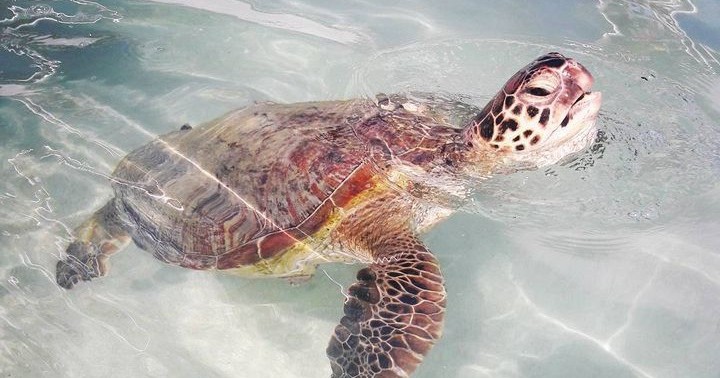Kaneohe Bay blends tranquil waters with thrilling currents, rewarding timely visits with perfect weather and clear sea views. This guide helps you choose the right season and conditions to maximize your adventure on and around Hawaii’s iconic bay.
Start Early to Beat Afternoon Winds
Morning paddles benefit from calmer seas and gentler winds, making trips safer and more enjoyable.
Use Reef-Safe Footwear
Protect your feet when entering and exiting the water; rocky and coral edges can be sharp and slippery.
Stay Hydrated and Sun-Protected
Hawaii’s sun is intense—carry water and wear UV-protective clothing to avoid dehydration and sunburn.
Monitor Local Weather Updates
Trade winds and sudden showers can impact conditions quickly; check reliable local forecasts before heading out.
Timing Your Kaneohe Bay Adventure: When Weather Meets Opportunity

Private East Oahu Sandbar Tritoon Charter Cruise
All Ages! • 2-8 Hour Options • Up to 6 People
Discover the serene beauty of East Oahu's sandbars on a private Tritoon cruise. With expert crew and customizable routes, this boat tour offers a unique Hawaiian adventure for all ages.
Kaneohe Bay, spreading its wide arms along the windward coast of Oʻahu, offers a variety of water and coastal adventures that reward those who respect its moods. Planning a trip here means syncing with the best weather windows, where sun, wind, and tide come together to paint an optimal experience.
The bay can be a mirror-like expanse or a roiling playground, daring the adventurer to read its signals. Morning hours are usually calmer; trade winds tend to settle in by midday, bringing gusts that can either propel your kayak or challenge your balance. For snorkeling and swimming, early visits maximize water clarity and sea life encounters, as sunlight penetrates beneath gentle waves before the currents grow restless.
Seasonal changes shift Kaneohe Bay’s personality. The summer months from May through October present warmer temperatures and steadier seas, ideal for longer outings and paddling expeditions. Winter, while still mild compared to mainland climates, rolls in with occasional showers and stronger trade winds, turning the bay into a spot for more experienced adventurers capable of navigating brisker waves.
When preparing, consider that the bay’s shorelines rise gently with coral reefs pushing underwater edges out, ensuring you approach with respect and caution. Shore breaks can be unpredictable, especially when swells increase. Waterproof footwear is recommended due to sharp reef points. Hydration and lightweight, sun-protective clothing are not optional—in the sun’s steady presence, they’re essentials.
Kaneohe Bay is more than a body of water; it’s a living, breathing entity. The currents can nudge you forward with a determined purpose or resist, reminding you that the environment is fiercely itself. Align your timing with these forces, and the bay will reward you with unmatched crystal-clear waters, glimpses of doll-like coral fish, and towering green ridges clasping the horizon.
Whether you approach for a relaxed paddle, a swim through its sheltered coves, or a guided kayak tour with the backdrop of majestic Koʻolau Mountains, choosing the right time enhances every moment. Avoid the hottest midday sun when the shoreline heat bakes in. Early mornings prove cool and serene, with soft light that animates the landscape without overwhelming. Evenings hold a quieter promise but can sometimes see gustier winds fan across the water’s surface.
In summary, target your Kaneohe Bay adventure from late spring through early fall for the greatest weather consistency, calm seas, and vibrant water visibility. Check daily forecasts and heed local advice—the bay is ever confident, ever changing, and eager for those who understand its rhythms.
Nearby Trips
All Adventures
Boat Charters
Water Activities
Adventures near Kaneohe
Discover the unique and memorable adventures that make Kaneohe special.
Frequently Asked Questions
When is the best time of day to visit Kaneohe Bay?
Early morning is ideal—calmer winds and clearer waters provide safer conditions and better visibility for snorkeling or paddling.
Can beginners safely kayak in Kaneohe Bay?
Yes, beginners can enjoy kayaking if they stick to calm hours and sheltered areas. Hiring a guide or joining a group tour is recommended for safety and orientation.
Are there any wildlife encounters to watch for in Kaneohe Bay?
Yes, the bay offers sightings of green sea turtles, colorful reef fish, and occasionally spinner dolphins. Respect wildlife by maintaining distance and not disturbing their habitats.
What historical significance does Kaneohe Bay hold?
Beyond its natural beauty, Kaneohe Bay was vital to native Hawaiian communities for fishing and cultural practices. During WWII, it served as a naval base, adding layers to its storied past.
What environmental considerations should visitors keep in mind?
Kaneohe Bay’s coral reefs are sensitive ecosystems. Avoid touching or stepping on coral, use reef-safe sunscreen, and dispose of any waste properly to protect the bay’s health.
Are there lesser-known viewpoints or features to explore?
Hidden coves along the bay’s shoreline offer quiet spots for reflection and wildlife observation. The offshore sandbars, visible during low tide, provide unique vantage points inaccessible to many.
Recommended Gear
Waterproof Footwear
Protect feet from sharp coral and rocks when entering or exiting the water.
Hydration Pack
Keeps you hydrated in strong sun and heat during longer excursions.
UV Protection Clothing
Lightweight, long-sleeve clothing protects skin from intense Hawaiian sun.
Waterproof Dry Bag
Keeps personal items dry and secure during water activities.
Local Insights
Hidden Gems
- "Offshore sandbars accessible during low tide for unique shallow-water exploration"
- "Pohakea Bay, a quieter cove with rich coral diversity"
- "Secret tide pools near Coconut Island"
Wildlife
- "Honu (green sea turtles) grazing on reef grasses"
- "Spinner dolphins often seen playing near the bay entrance"
- "Rare reef fish such as the strawberry clownfish"
History
"Kaneohe Bay held strategic military importance during World War II and remains a site of cultural significance for Native Hawaiians, who continue traditional fishing and stewardship practices."
